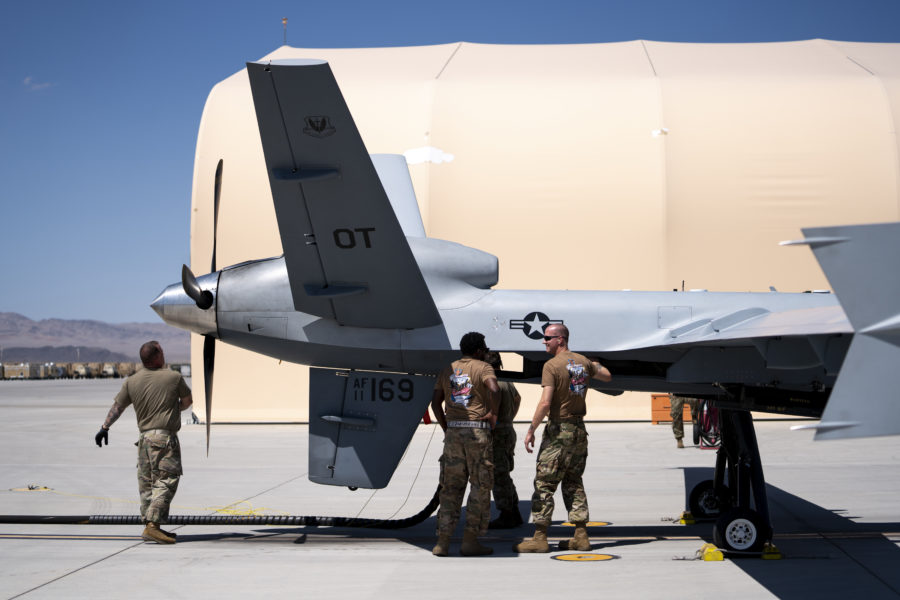The Air Force demonstrated that it can operate the remotely-piloted MQ-9 Reaper over long-range flights in the Pacific using limited ground support gear and non-specialist ground personnel. The demonstration provided a boost for the service’s agile combat employment concept, it said Dec. 7.
The tests and exercises, called “ACE REAPER,” were conducted mid-September to early October, but the Air Force is announcing them only now.
The 556th Test and Evaluation Squadron flew an MQ-9 from Creech Air Force Base, Nev., to Marine Corps Base Hawaii using a “significantly modified Auto Takeoff and Landing Capability,” the unit said. The new system uses “imagery alone, without any standard surveys conducted prior” to field operations. While at the Marine Corps base, the MQ-9 flew five local pattern sorties and was used in training six sets of ground crews not previously trained in Reaper ground operations, certifying those crews to train other non-specialists in MQ-9 operations for future sorties.
The agile combat employment team “conducted three rapid refuels utilizing only five multi-capable airmen who were proficient between weapons, aircraft maintenance, and communications,” 556th commander Lt. Col. Michael Chmielewski said in a press release. Although refueling, rearming, and regenerating a Reaper typically takes three hours, the commander reported an average time of just 20 minutes.
The MQ-9 then flew on to Andersen Air Force Base, Guam. The flight validated its ability to make the transit “on reduced satellite bandwidth” and migrating from one satellite to another.
The 556th proved the MQ-9 “does not require any … equipment” to conduct launch and recovery operations, Chmielewski said.
A pilot on the ground at Andersen used a Ruggedized Aircraft Maintenance Test Station as an ersatz cockpit to control the MQ-9 to a landing once it was within line of sight. As at Marine Corps Base Hawaii, “this landing was conducted without any MQ-9 operations or runway surveys being physically conducted prior to first landing at Guam,” the 556th said in a press release.
The entire logistics footprint included seven personnel and a half-pallet of equipment, while a generator, light cart, and fuel were already in place, Chmielewski said. Another sortie was generated within seven hours of the equipment arriving to Guam.
Collectively, the experiment showed that MQ-9 operations could be conducted with “a nearly 90 percent reduction in maintenance manpower, 95 percent reduction in maintenance equipment, and a 100 percent reduction in launch and recovery equipment,” he added.
The experiments verified aspects of USAF’s hub-and-spoke concept for island operations in the Pacific, conducting minor maintenance, rapid refueling, and rapid re-arming at austere locations. “This capability will move its logistics team out from other large footprints and remain closer to the fight to maximize its combat effectiveness,” the 556th said.
“From maintenance to communications to operations, our team did a phenomenal job across the spectrum to innovate new tactics from existing capabilities on a near-impossible timeline … to start validating the MQ-9’s ability to be agile,” said Chmielewski. He acknowledged the support of the 432nd Wing and 49th Wing in the tests.
The next step will be employing the MQ-9 in its new lean format into the Valiant Shield 2022 exercise to “increase strategic and operational success in the theater,” he said.
